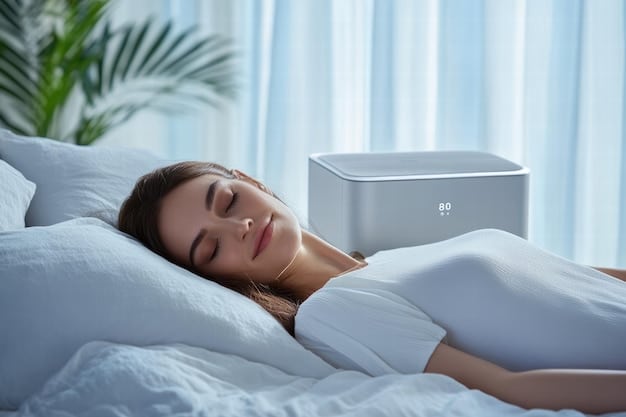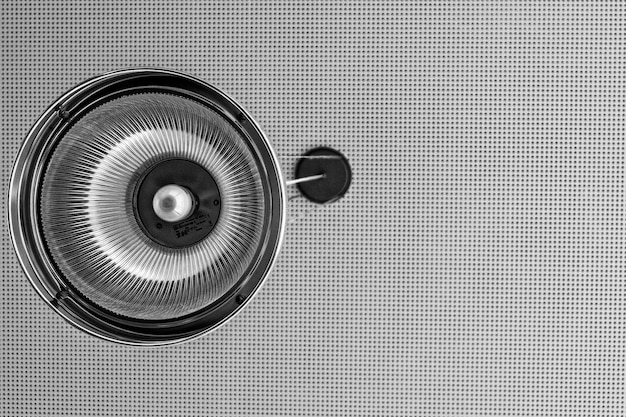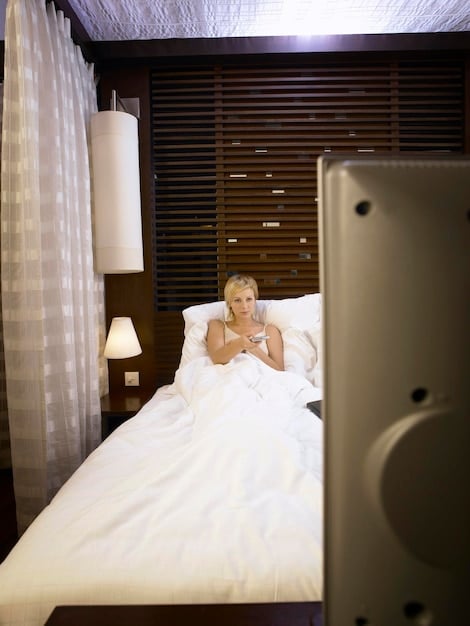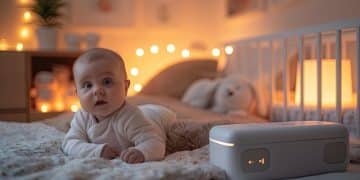White Noise for Street Noise: Does It Really Help You Sleep?

White noise can indeed help mask street noise by creating a consistent sound that covers up sudden, disruptive sounds, making it easier to fall asleep and stay asleep.
Living in a bustling city often comes with the persistent soundtrack of street noise. If you’re struggling to sleep through sirens, traffic, and other urban sounds, you might be wondering: **Insider Tip: Using White Noise to Mask Street Noise – Does it Really Work?** Let’s explore how white noise can transform your sleep environment.
Understanding the Impact of Street Noise on Sleep
Street noise can be a major disruptor of sleep, affecting both the ability to fall asleep and the quality of sleep itself. Constant or intermittent noises can trigger arousal responses, preventing the brain from fully relaxing into a restful state. This can lead to fragmented sleep and a feeling of being unrested in the morning.
The Science Behind Sleep Disruption
Numerous studies have shown a direct correlation between environmental noise and sleep disturbances. Exposure to noise during sleep can increase heart rate, blood pressure, and cortisol levels, all of which are indicators of stress. These physiological responses can lead to long-term health issues if sleep is consistently disrupted.
Common Sources of Street Noise
- Traffic: Cars, trucks, and buses are constant sources of noise in urban environments.
- Construction: Construction sites often operate early in the morning and late into the night.
- Sirens: Emergency vehicles can jolt you awake with their loud sirens.
- Human Activity: Loud conversations, music, and other human activities can also contribute to street noise.
Mitigating the impact of street noise is crucial for maintaining good sleep hygiene. Without effective strategies, individuals can suffer from chronic sleep deprivation, leading to decreased cognitive function, mood disorders, and increased risk of accidents.

What Is White Noise and How Does It Work?
White noise is a consistent, static-like sound that contains all frequencies at equal intensity. It works by masking other sounds in the environment, making them less noticeable and disruptive. This masking effect can be particularly effective for blocking out intermittent and unpredictable street noise.
The Science of Sound Masking
The human ear is sensitive to changes in sound. When a sudden, loud noise occurs, it can trigger an alert response in the brain, disrupting sleep. White noise creates a uniform soundscape that minimizes the impact of these sudden noises, allowing the brain to stay in a more relaxed state.
Benefits of White Noise
Using white noise can lead to several benefits, including improved sleep quality, reduced stress, and enhanced focus. By masking distracting sounds, white noise can create a more conducive environment for both sleep and concentration.
Types of White Noise Machines and Apps
- Dedicated White Noise Machines: These devices are specifically designed to generate white noise and often come with customizable settings.
- Smartphone Apps: Many apps offer a variety of white noise sounds, allowing you to create a personalized soundscape.
- Sound Conditioners: These machines offer a range of sounds, including white noise, pink noise, and nature sounds.
Choosing the right type of white noise and adjusting the volume to a comfortable level is essential for maximizing its effectiveness. Experiment with different sounds and settings to find what works best for you.
The Effectiveness of White Noise in Masking Street Noise
While white noise can be an effective tool for masking street noise, its effectiveness can vary depending on the intensity and frequency of the noise, as well as the individual’s sensitivity to sound. For some, white noise provides a sufficient barrier, while others may require additional strategies.
Studies and Research
Several studies have investigated the effectiveness of white noise in improving sleep quality. Research has shown that white noise can reduce the time it takes to fall asleep, increase the duration of sleep, and improve overall sleep efficiency.
Real-World Experiences
Many individuals report positive experiences with using white noise to mask street noise. They find that it helps them to fall asleep more easily, stay asleep longer, and wake up feeling more rested. However, it’s important to note that individual results may vary.
Limitations of White Noise
- Intensity of Street Noise: In situations with extremely loud or persistent street noise, white noise alone may not be sufficient.
- Individual Sensitivity: Some individuals may find white noise irritating or distracting.
- Dependency: There is a potential for developing a dependency on white noise, making it difficult to sleep without it.
To maximize the effectiveness of white noise, consider combining it with other strategies, such as using earplugs or soundproofing your bedroom.

Combining White Noise with Other Sleep Solutions
For those who find that white noise alone is not enough to mask street noise, combining it with other sleep solutions can provide a more comprehensive approach. Strategies such as soundproofing, using earplugs, and establishing a consistent sleep schedule can work synergistically with white noise to improve sleep quality.
Soundproofing Your Bedroom
Soundproofing can significantly reduce the amount of street noise that enters your bedroom. This can be achieved through various methods, such as installing soundproof windows and doors, adding thick curtains, and sealing gaps and cracks.
Using Earplugs
Earplugs can provide an additional layer of sound protection. They work by physically blocking noise from entering the ear canal. When combined with white noise, earplugs can be particularly effective for masking loud and intermittent noises.
Establishing a Consistent Sleep Schedule
- Go to Bed and Wake Up at the Same Time Every Day: Consistency helps regulate your body’s natural sleep-wake cycle.
- Create a Relaxing Bedtime Routine: Engage in calming activities, such as reading or taking a warm bath, before bed.
- Avoid Caffeine and Alcohol Before Bed: These substances can interfere with sleep.
By addressing multiple factors that can impact sleep, individuals can create a more conducive environment for restful and restorative sleep.
Potential Downsides and How to Address Them
While white noise is generally considered safe and effective, there are some potential downsides to consider. These include habituation, masking important sounds, and potential hearing damage. Understanding these risks and implementing strategies to mitigate them is essential for safe and effective use.
Habituation and Dependency
Over time, some individuals may become habituated to white noise, meaning that they require increasingly louder volumes to achieve the same masking effect. This can lead to a dependency on white noise, making it difficult to sleep without it.
Masking Important Sounds
White noise can mask important sounds, such as fire alarms or crying babies. This can be particularly problematic for parents or individuals with hearing impairments. To address this, ensure that you can still hear important sounds when using white noise.
Potential Hearing Damage
- Keep the Volume at a Safe Level: Avoid using white noise at excessively loud volumes, as this can lead to hearing damage.
- Use a Timer: Consider using a timer to turn off the white noise after you fall asleep.
- Consult with an Audiologist: If you have concerns about hearing loss, consult with an audiologist for guidance.
By being mindful of these potential downsides and implementing appropriate safeguards, individuals can enjoy the benefits of white noise without compromising their health and safety.
Choosing the Right White Noise Machine or App
Selecting the right white noise machine or app can significantly impact its effectiveness and your overall sleep experience. Consider factors such as sound quality, customization options, portability, and user reviews when making your decision.
Sound Quality and Variety
The sound quality of a white noise machine or app is crucial for creating a soothing and effective soundscape. Look for devices that offer a variety of sound options, including different types of white noise, pink noise, and nature sounds.
Customization Options
Customization options allow you to tailor the sound to your specific preferences. Look for devices that offer adjustable volume levels, tone controls, and the ability to create custom soundscapes.
Portability and Convenience
- Consider Portable Options: If you travel frequently, a portable white noise machine or app may be a good choice.
- Ease of Use: Look for devices that are easy to operate and have intuitive controls.
- Battery Life: If you choose a portable device, consider the battery life and charging options.
By carefully considering these factors, you can choose a white noise machine or app that meets your needs and enhances your sleep environment.
| Key Point | Brief Description |
|---|---|
| 😴 Sleep Disruption | Street noise disrupts sleep, affecting overall health and well-being. |
| 🎧 White Noise | Masks street sounds by providing a consistent, ambient noise. |
| 🌃 Soundproofing | Reduces external noise through physical barriers like curtains. |
| 🔕 Earplugs | Blocks noise physically, enhancing the effects of white noise. |
Frequently Asked Questions
▼
White noise is a consistent, static-like sound containing all frequencies at equal intensity. It’s often used to mask other sounds in the environment, making them less noticeable and disruptive, promoting better sleep.
▼
White noise helps by creating a uniform soundscape that minimizes the impact of sudden noises. This allows the brain to stay in a more relaxed state, reducing sleep disturbances from street sounds or other environmental noises.
▼
While white noise can significantly reduce the impact of street noise, it may not completely block it out, especially if the noise is very loud. Combining it with other solutions like soundproofing is ideal.
▼
Potential downsides include habituation, where you need increasing volumes, and masking important sounds like alarms. Ensuring safe volumes and using timers can mitigate most risks associated with prolonged use.
▼
Look for good sound quality, a variety of sound options, customization features, and portability. User reviews can provide insights into real-world performance. Choose options with adjustable volumes for personalization.
Conclusion
In conclusion, using **Insider Tip: Using White Noise to Mask Street Noise – Does it Really Work?** is a viable strategy for improving sleep quality in noisy environments. While its effectiveness can vary, combining white noise with other sleep solutions and addressing potential downsides can maximize its benefits, leading to better rest and overall well-being.





